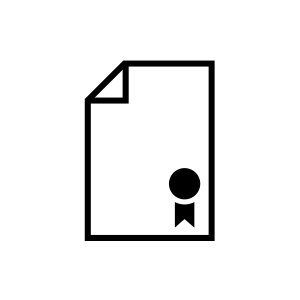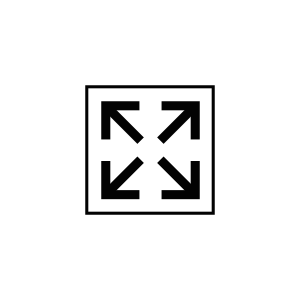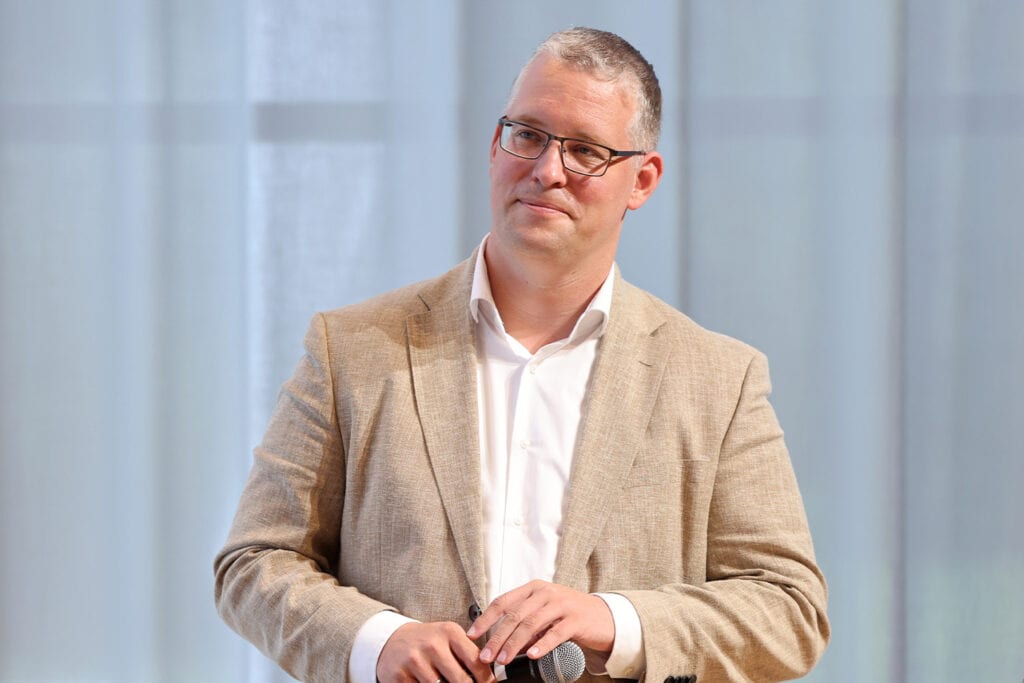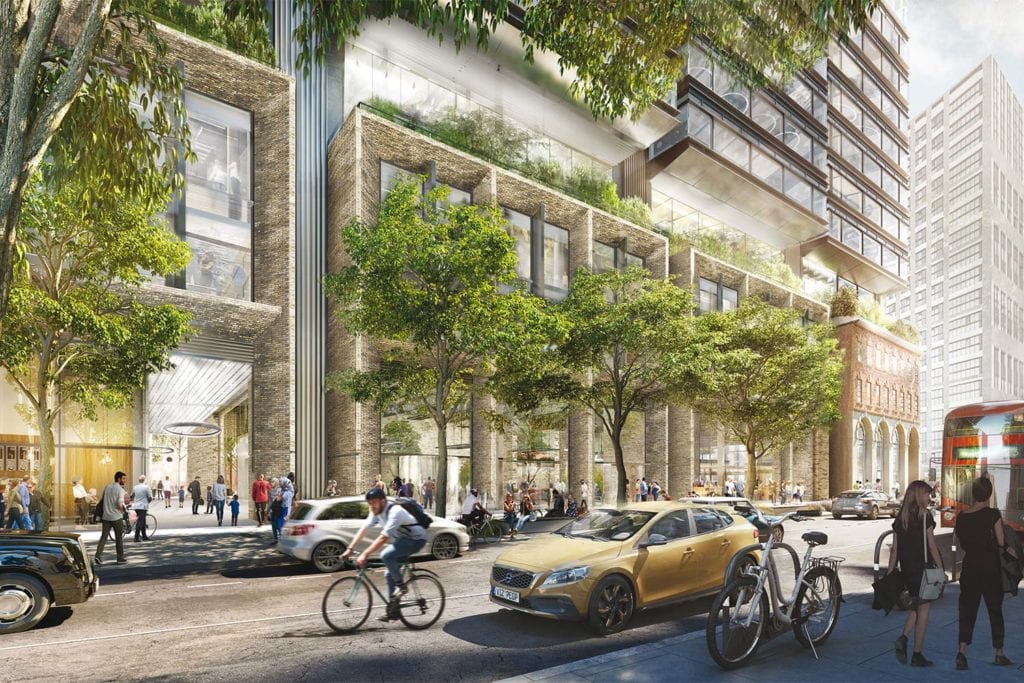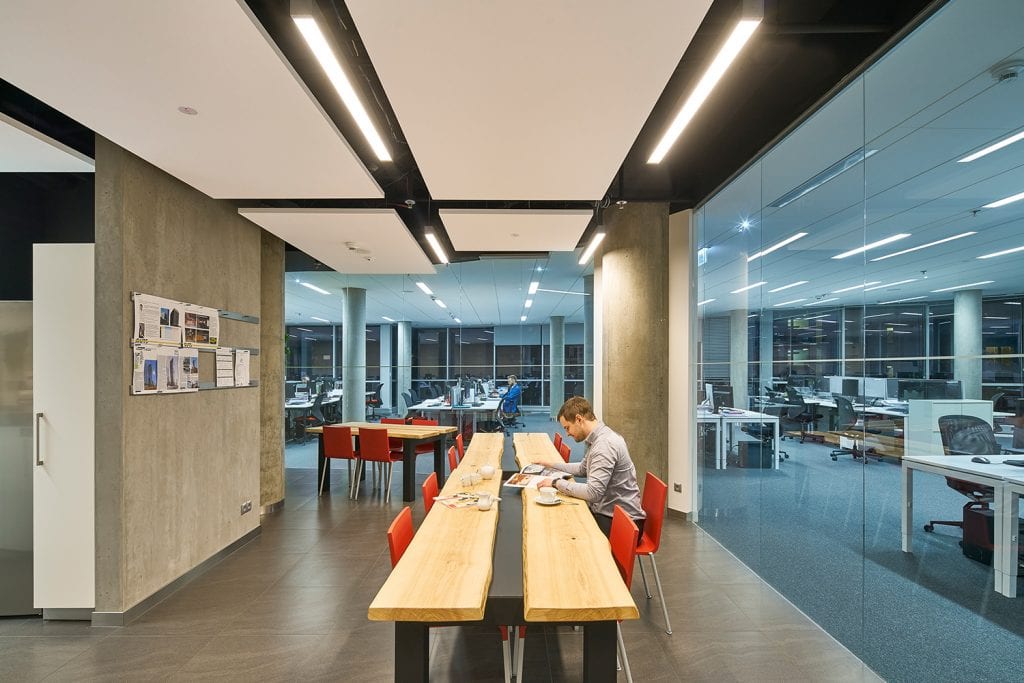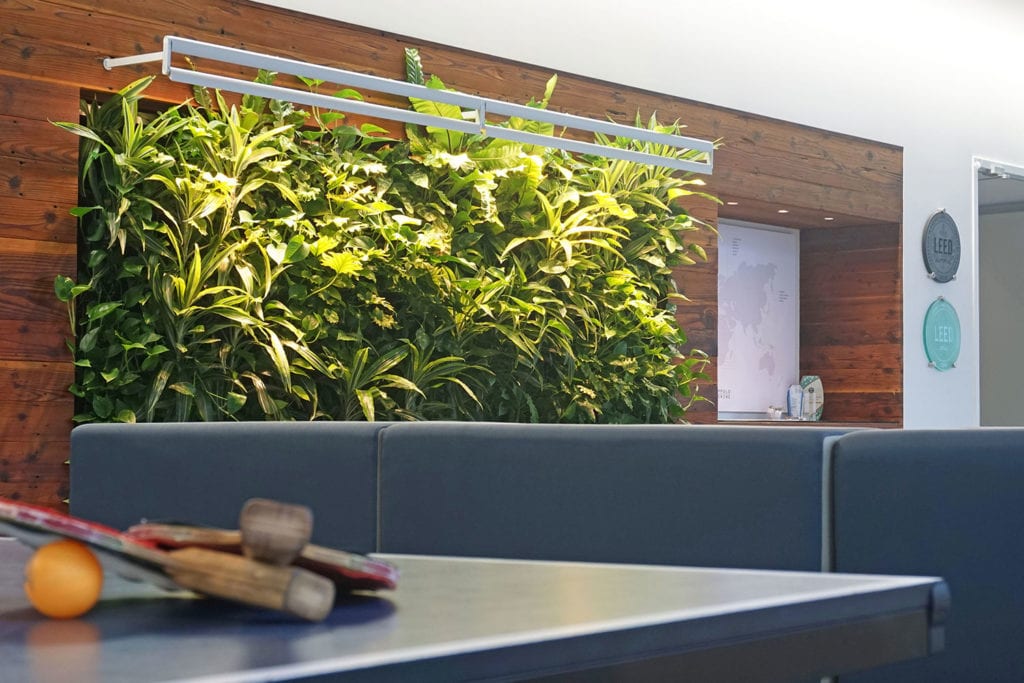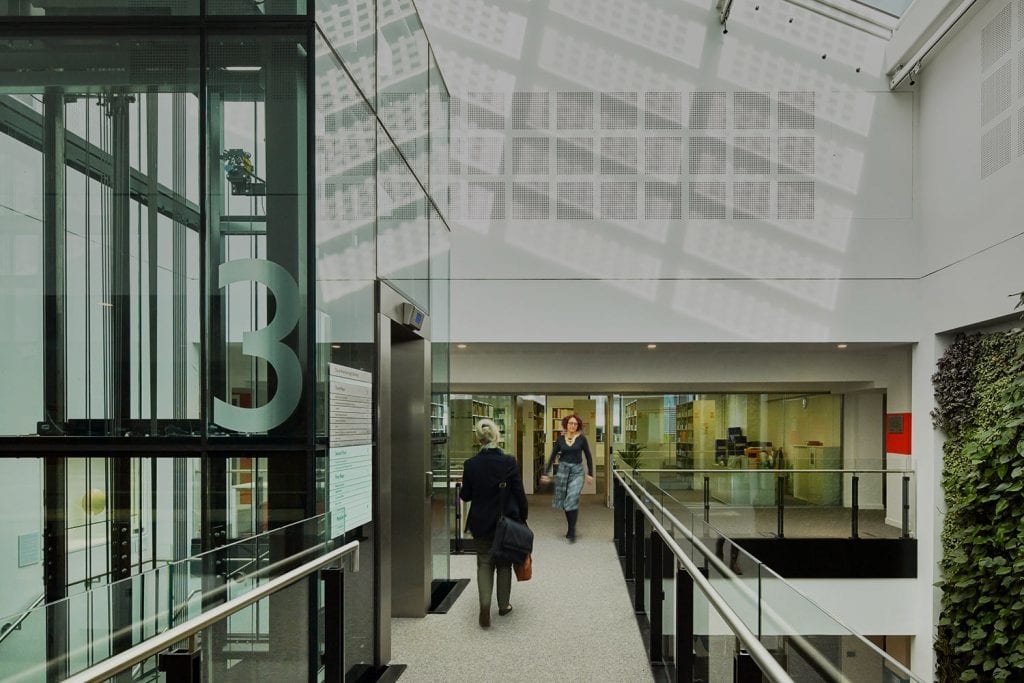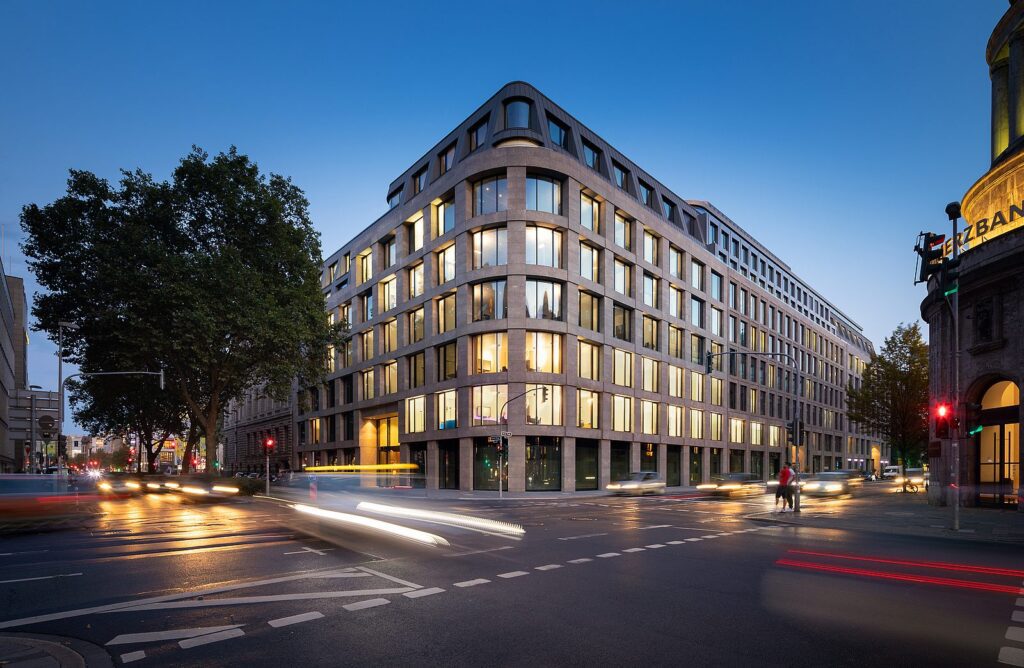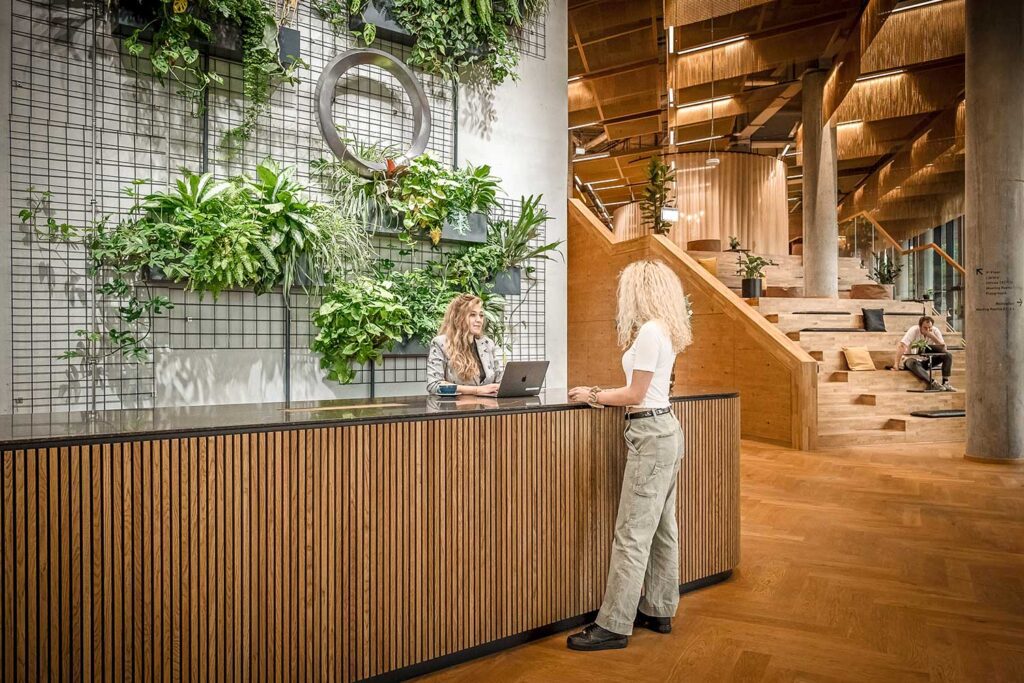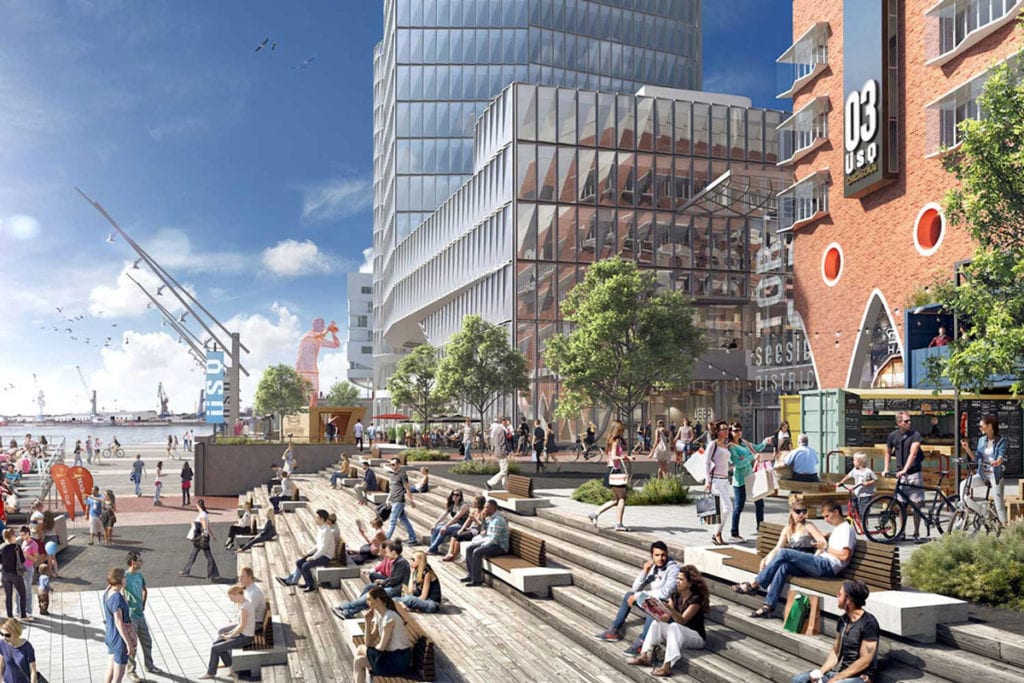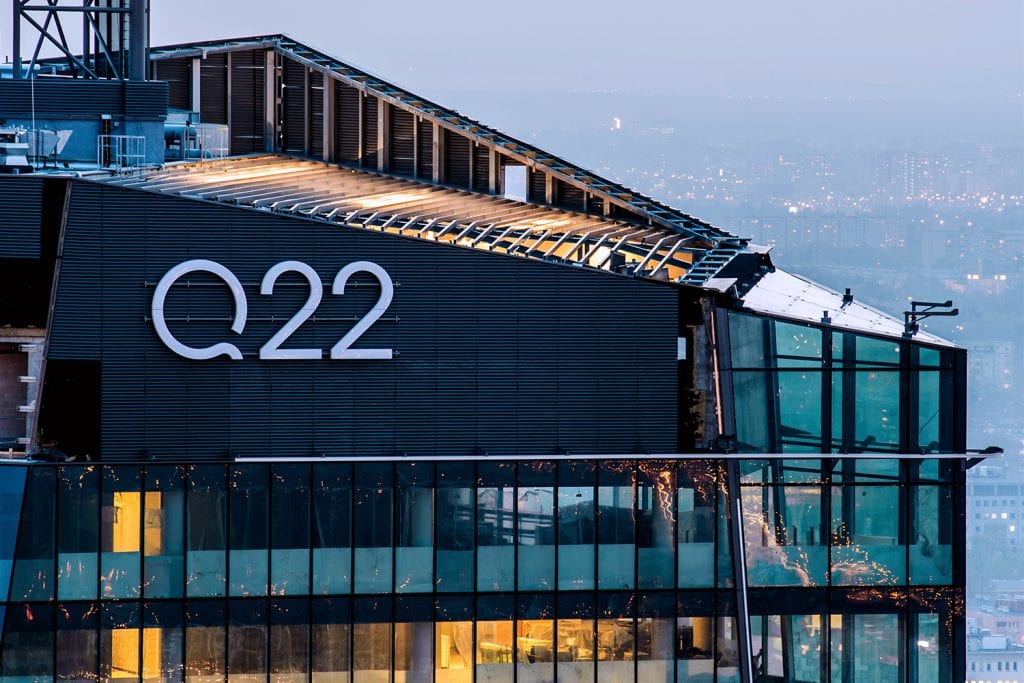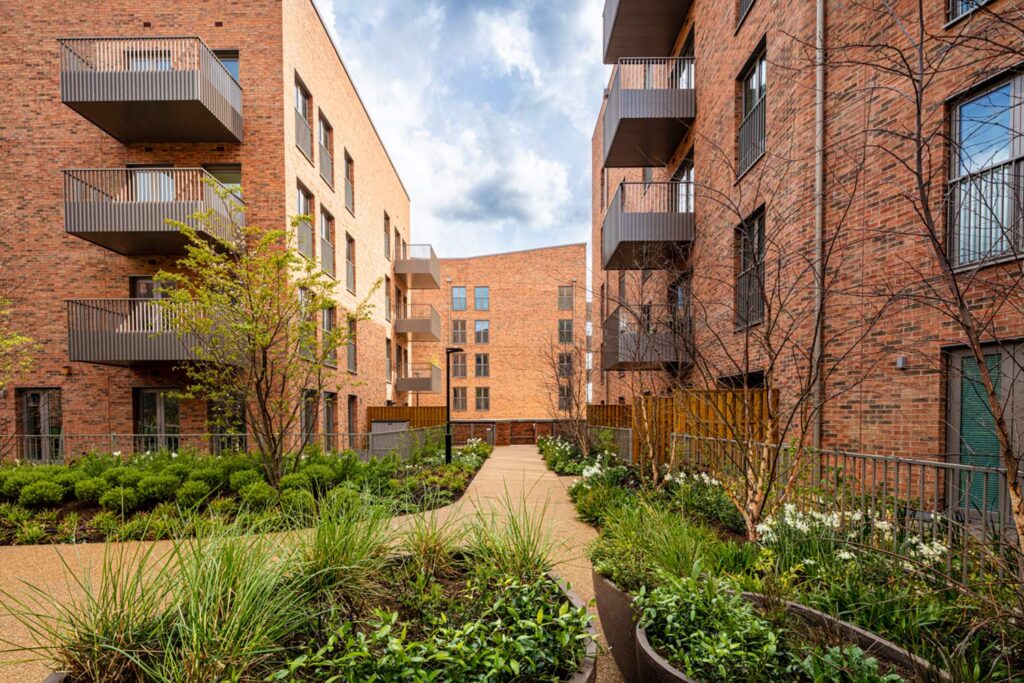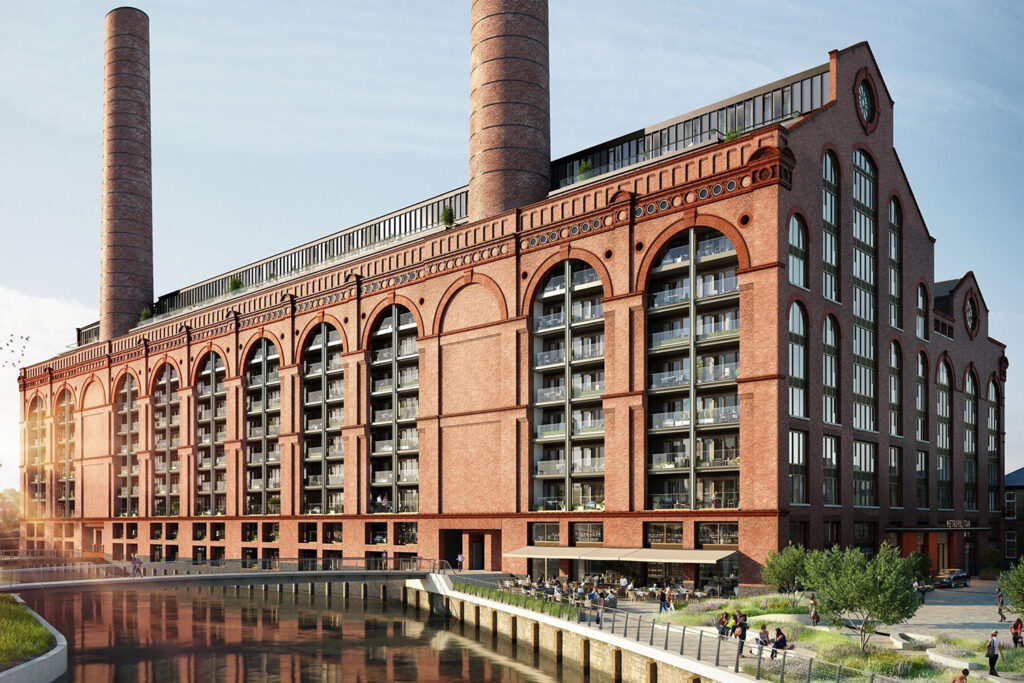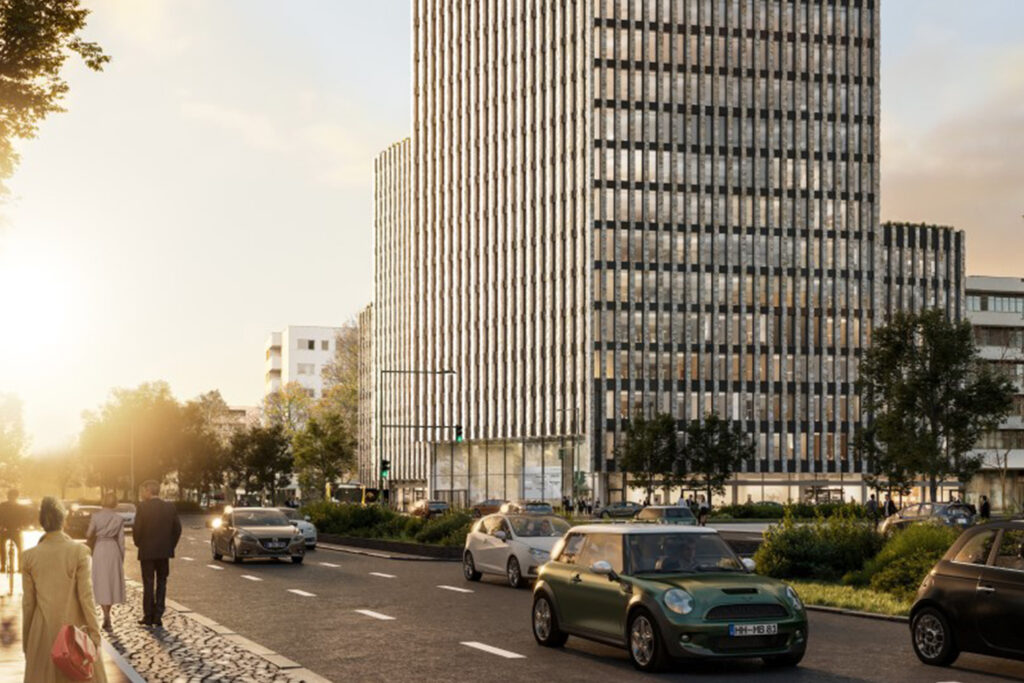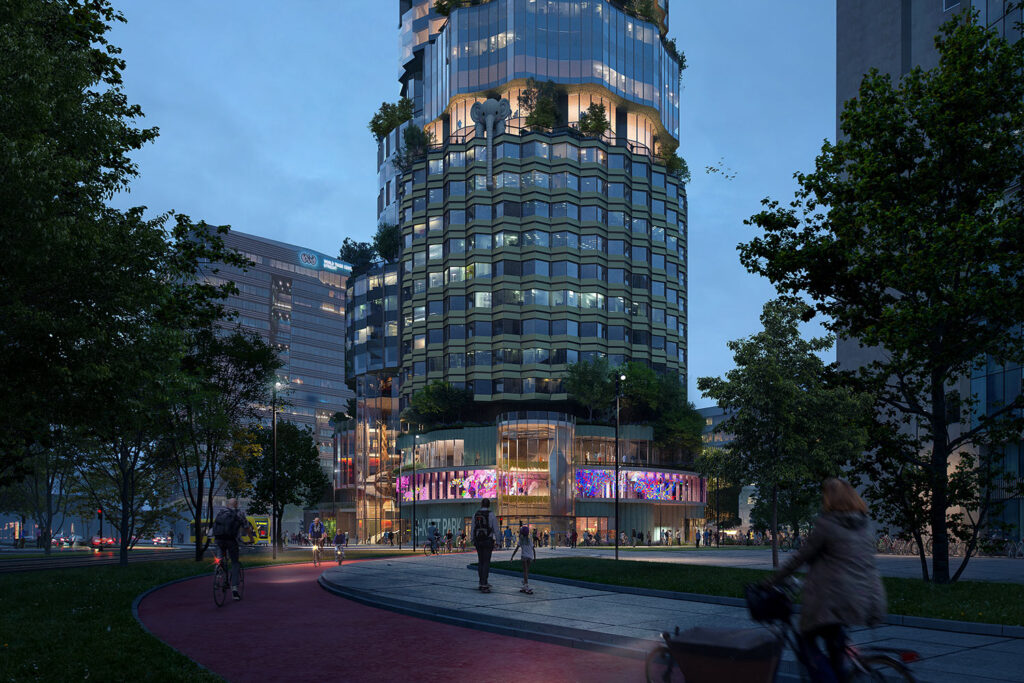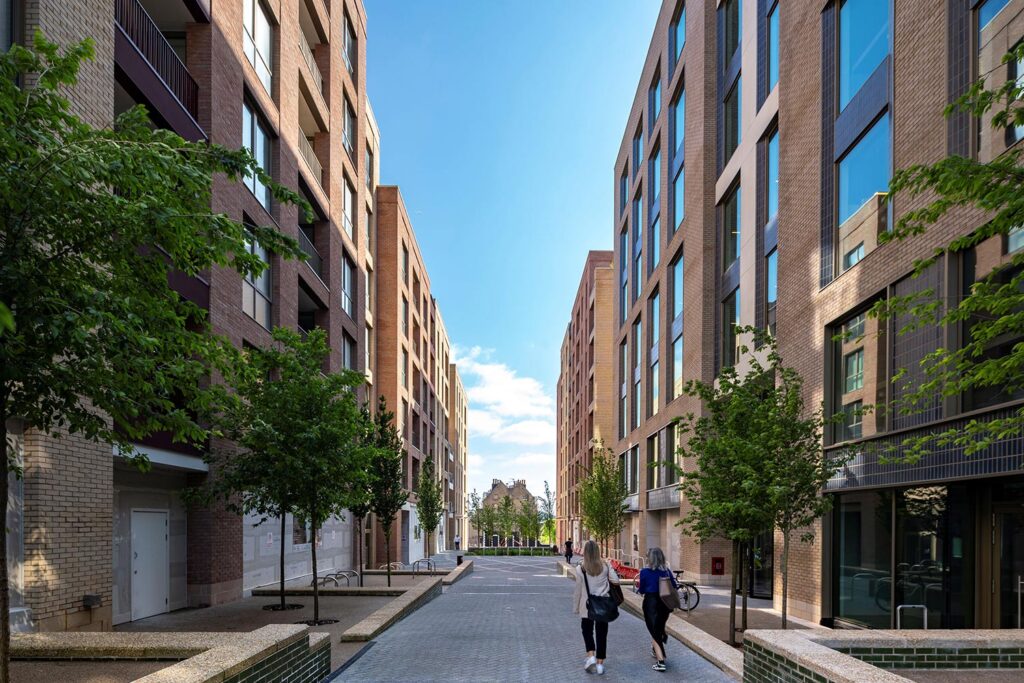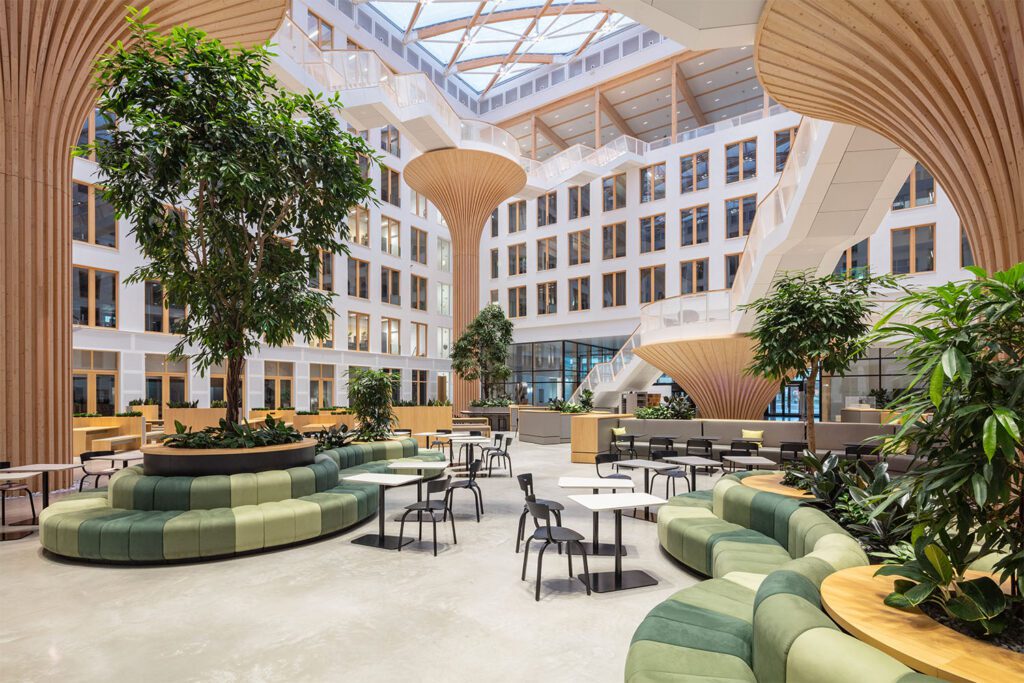
EDGE Suedkreuz
Berlin, Germany
Project details
Client
EDGE Technologies
Architect
Tchoban Voss Architekten; Granz + Zecher; de Winder (interior architecture)
Collaborator
CREE Buildings
Duration
2016-2022
Services provided by Buro Happold
Building Information Management (BIM), Building Services Engineering (MEP), Structural engineering, Sustainability
Situated near the Südkreuz station in Berlin’s Schöneberg district, EDGE Technologies is developing a 10,000m² property with the intention of creating 39,000m² of office space for German energy supplier Vattenfall.
Challenge
EDGE Suedkreuz is one of the largest buildings planned as a modular timber hybrid construction in Germany. It comprises two office buildings, each with six floors and a connecting underground car park, which is fully equipped with charging stations for electric vehicles.
In line with Vattenfall’s corporate strategy as well as that of EDGE Technologies, sustainability has been imperative from the very beginning of the project. The aim was to reduce the building’s carbon footprint, to use sustainable and healthy materials and to take into account the well-being of the future occupants. The modular timber hybrid construction method is an important part of achieving this and was integrated into the engineering concept.
Buro Happold was commissioned to deliver a holistic concept consisting of structural engineering, building services engineering (MEP), BIM management and sustainability consulting.
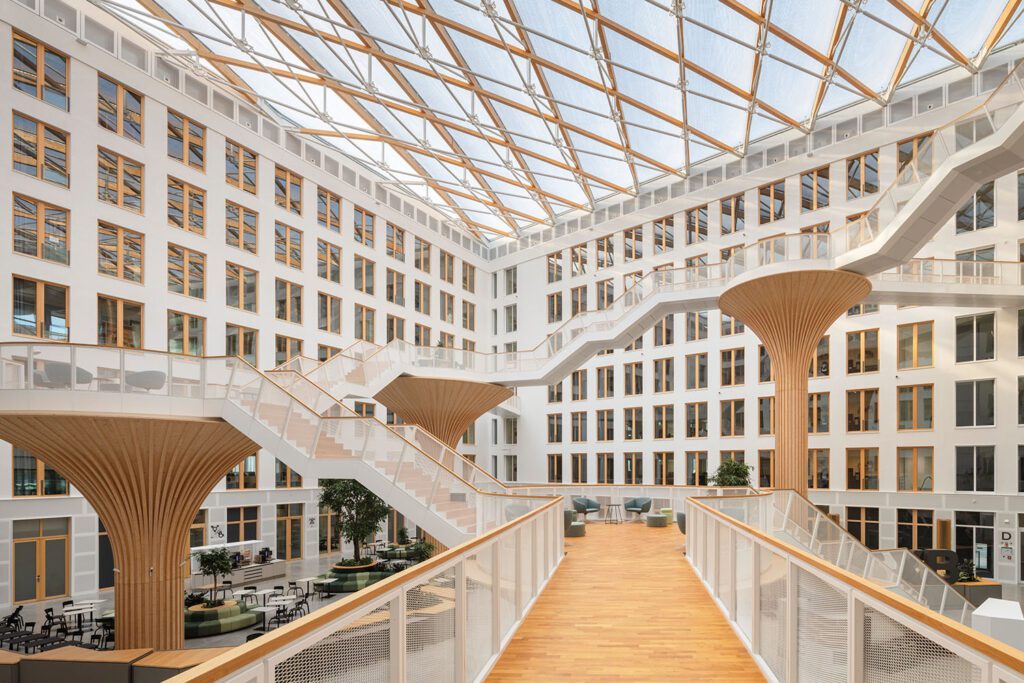
Solution
We worked closely with Cree by Rhomberg, innovators of a revolutionary new construction system, to achieve a fully modular, timber-concrete-hybrid structure. The advantages of this approach include rapid construction, the sustainable nature of the material and ultimately, the realisation of a more desirable working environment. Additionally, the structure’s light weight will significantly reduce costs associated with creating the building’s foundation.

The design features timber throughout and incorporates floor-to-ceiling windows, which will afford people passing by glimpses into the wooden interior. Oversailing the 1.600m2 atrium, the roof construction will be comprised of lightweight ETFE-cushions, a visually appealing while cost efficient design element. Trussed timber roof beams will help to ensure visual continuity with the rest of the building.
The atrium fulfils several important functions. It provides a centralised space for formal and informal meetings while the atrium roof, which is open on two sides, allows for natural ventilation. The ETFE cushions can be used to adjust the level of daylight and thus also control the temperature. Using advanced analytical modelling, our experts were able to achieve a balance between comfort, use of materials and energy consumption. Smart controls automatically regulate air quality, light and temperature to enable optimal working conditions and save energy.

All materials used were tested for their environmental impact. The timber used for the structure, for instance, comes from certified forests, other materials are recycled or recyclable where possible and surface paint does not contain toxic substances (VOC free). Our engineers considered the entire life cycle of the buildings, including the dismantling. All materials used have a life span of 50 years. The modular hybrid construction method means that dismantling will be as easy and efficient as construction.
The hybrid construction method challenged all the teams involved to come up with completely new and innovative approach to the joint coordination of all services. Hybrid ventilation systems, for example, make use of the space between the wooden beams, bringing integrated lighting and sensor technology into the building at the same time. As BIM managers, we were able to manage the coordination effort and adapt working methods to needs.
Our integrated approach enabled us to work closely with the certification team to achieve this aim. The project is expected to receive a high DGNB-rating.
Markus Schoppe, Group Director at Buro Happold

Value
Sustainability and occupant well-being were important drivers for the EDGE Suedkreuz project right from the start. These imperatives continue to inform the entire development and have resulted in a DGNB pre-certificate in platinum and WELL Gold. Vattenfall’s employees will benefit from a healthy indoor working environment, as well as from sports and medical facilities. The building’s proximity to Südkreuz railway station and its underground car park for e-cars will also provide employees and visitors with access to alternative, green mobility.
Awards
2023
Green GOOD DESIGN Award
2023
International Architecture Award
2023
Architizer A+ Awards
2023
Built Design Awards

